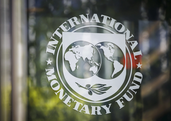The draft of the new pension law that almost doubles the public spending with the pensions by 2021, namely it will make them grow by over 130pct until 2022, is unsustainable, since it is not accompanied by the public revenues' increase measures, the Coalition for Romania's Development (CDR) warns in a press release sent to AGERPRES on Monday.
The CDR notes that the new draft pension law will generate an additional burden of rd 6.6pct of the gross domestic product estimated for 2022, that is adding to the optimistic projection of an annual 3pct budget deficit.
"According to the gov't own estimates, the assumed increases will represent for Romania a 18 billion euro annual additional cost starting with 2022. So, as of 2022 and the years to follow even presuming a 8pct optimistic annual nominal increase of the GDP for 2018 - 2022, the new law will generate a rd 6.6pct additional burden of the estimated GDP for 2022 that will add to the 3pct optimistic annual budget deficit projection. By comparing, in 2017 the public pensions' pay represented nearly 6.7pct of the GDP, whilst the spending with the education mounted to 2.9pct of the GDP, and the spending with the public health care system was 4pct of the GDP," the CDR officials say.
In the CDR members' opinion, the public pension system's implicit debt in Romania was approximately 275 billion euro, namely "over four times higher than Romania's public debt at that time." Also, they believe that the increase in the retirement benefits without rewarding measures being added to them, will only worsen the budget deficit's situation, by weakening the public finance.
On the other hand, the CDR mentions that a significant imbalance exists between the pension rights received by over 5 million Romanians, financed through contributions and based on the contributiveness principle, and the special pensions, granted to over 150,000 Romanians.
CDR is a private, apolitical initiative built as a collaboration agreement through the collective participation of its members gathering 45 organisations and associate members. The coalition represents over 54,000 companies that generate around 1.2 million jobs and over 50pct of the GDP.
New pension law unsustainable, public spending double by 2021(CDR)
Explorează subiectul
Articole Similare

10
IMF report confirms that our reform package is credible for partners (FinMin Nazare)
10

12
IMF requests from Romania right policy mix, ambitious structural reforms to restore fiscal sustainability
12

16
Russian ambassador summoned to Ministry of Foreign Affairs over drone that entered Romania's airspace on November 10
16

10
Canonisation of Holy Venerable Confessor Arsenie of Prislop to be locally proclaimed on Nov 28
10

19
All aboard the Euro-train: EU accelerates development of high-speed train network
19

10
EcoMin Miruta: Electronic ID card is very useful and should be integrated with more entities
10

8
My expectation is fuel prices to return to normal in very short period of time (competion watchdog's head Chiritoiu)
8

8
We monitor the egg market for price gouging (trade competition chief)
8

6
EcoMin Miruta says the Ministry is to have a tech team for state's digitalization architecture
6

9
Postage issue to celebrate 50th birthday of athletics great Gabriela Szabo
9

6
BNR expecting annual inflation rate in Romania to fall to 2.9pct in late Q3 2027
6

12
BNR Governor Isarescu: I do not believe that VAT will increase; no reason to increase it
12

10
IAR Brasov posts net profit of 20.81 million lei in the first nine months, up 38%
10




















Comentează